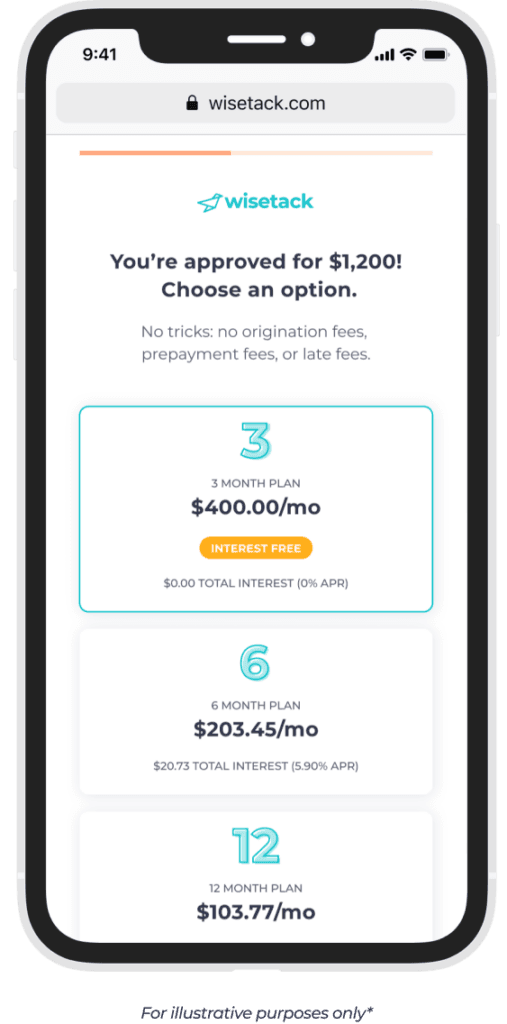We offer financing
We partnered with Wisetack to offer our customers flexible financing, so you can pay over time rather than all at once. The application takes about a minute to complete, and checking your options does not impact your credit score.
- Finance projects up to $25,000*
- Terms from 3 to 60 months*
- APR from 0% to 35.9%*
- No hidden fees or compounding interest
*All financing is subject to credit approval. Your terms may vary. Payment options through Wisetack are provided by our lending partners. For example, a $1,200 purchase could cost $104.89 a month for 12 months, based on an 8.9% APR, or $400 a month for 3 months, based on a 0% APR. Offers range from 0-35.9% APR based on creditworthiness. No other financing charges or participation fees. See additional terms at http://wisetack.com/faqs.

What you are asking about
Top Questions & Answers
What is prequalification and how does it work?
Are there any fees associated with using Wisetack?
Wisetack offers easy, transparent financing options. Financing through Wisetack has no hidden fees, and it doesn’t cost anything to apply (origination fees) or pay off your financing early (prepayment penalties). Financing is simple interest instead of compounding interest. Your financing offer clearly shows the total amount you’ll pay for each option, including interest.
How do I apply for financing?
Ask your Clegg’s Pest Control representative to send you a financing application link based on cost of the service amount you’re considering. They’ll send the link via text or email.
Will checking my financing options impact my credit score?
When checking your eligibility, Wisetack and its lending partners perform a soft credit pull, which means that your credit score will not be affected. However, accepting a financing offer can affect credit, and repayment behavior will also affect credit. You can learn about the difference between a soft versus hard credit check here. Paying back on time can have a positive effect on a credit score while paying late will have a negative effect. It’s easy to set up automatic payments to ensure on-time payments and help build a positive credit history.
Do I have to link my bank account when applying?
Linking your bank account is optional. Wisetack recommends linking your account so you can set up automatic ACH bank payments, but this can also be done after you complete your purchase. Autopay helps with on-time payments. Building a history of on-time loan payments can be a good way to improve your credit score.
How do I finalize my financing option?
Once the service is complete, you can confirm by returning to the application and clicking “Done – Release Payment”. To access your application, open the email or SMS sent to you by your Clegg’s Pest Control representative. This sends the payment to Cleggs. You’ll both receive an email confirmation.
Can I pay off my purchase early?
Yes, there’s no penalty for paying early.
How do I make my payments?
Wisetack will send you details about how and where to pay once the job is complete.
How do I contact Wisetack?
Call or text: 1 (833) 927-0333
